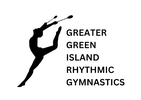|
Rope
The rope may be of hemp or any synthetic material. Its length is proportionate to the height of the gymnast. The technical figures may be made with the rope either taut or loose, with one or both hands, with or without change of hand. The relationship between the apparatus and the gymnast is more explosive than in the other cases. The rope often appears as a serpent like attacker seizing and winding around the gymnast, but suppleness and agility, tinged with elegance, always win out in the end. |
|
Ball
This is made of rubber or plastic. The ball is the only apparatus for which no grip is allowed. This means that amore sensuous relationship between the body and the apparatus is required. The ball moves in perfect harmony with the body. Spectacular throws with control and precision in the catches are dynamic elements. |
|
Clubs
These are made of wood or plastic. Sleight of hand! The gymnast uses the clubs to execute mills, rolls, twists, throws and as many asymmetric figures as possible, combining them with the many figures featured in non apparatus gymnastics. Exercises with the clubs require a highly developed sense of rhythm, maximum psychomotor coordination and precision up to watchmaking standards. The clubs are particularly suited to ambidextrous gymnasts. |
|
Ribbon
The stick is usually made of wood, bamboo, plastic or fibreglass. The ribbon is most often made of satin or a non-starched derivative. The ribbon is long and light and may be thrown in all directions. Its function is to create designs in space. Its flights through the air make images and shapes of every kind. Figures of many different sizes are executed at varying rhythms. Snakes, spirals and throws are the essentials of the ribbon's flight. |
|
Hoop
This hoop is made of plastic and defines a space. The space is used to the utmost by the gymnast who moves within the circle formed. Handling the hoop requires frequent changes of grip, and the main requirement is foot movement coordination. The shape of the hoop favours rolls, passages, rotations and walkovers. |
|
Group
A group routine involves four or five gymnasts on the competition floor at once, collaborating in harmony with the apparatus, the music and each other. There is often an extra gymnast in a group to how many perform the routine, this gymnast and the one they regularly switch out with are called the reserves. Reserves are important as they step in if another gymnast is unable to compete. Each group performs two routines at competitions, one with each of the reserve gymnasts (assuming all members of the group are competing) so they everyone is included. Groups with younger gymnasts can have free routines (meaning no apparatus is used), otherwise groups often have the same apparatus (one for each gymnasts in the routine). Older gymnasts can have a mix of 2 different apparatuses. |
